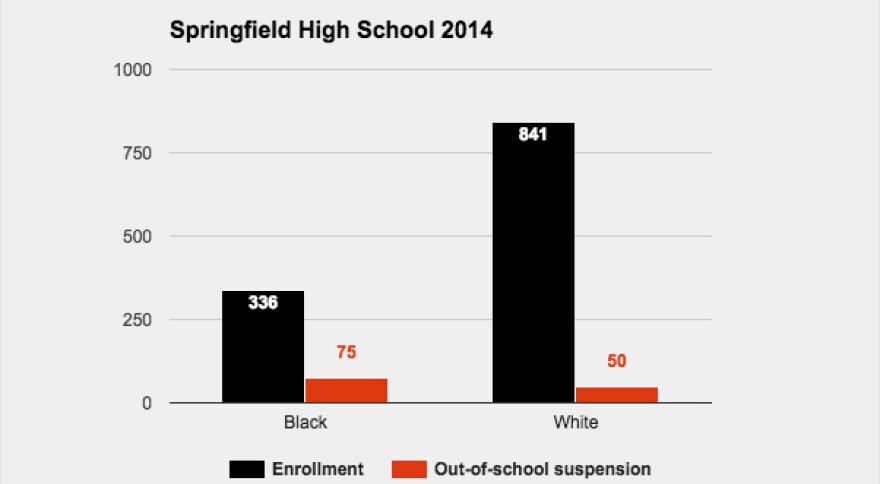Paris Taborn chose to leave Springfield High.
“I kept getting in trouble at school. So like, I would get sent home, and stuff, every day. I would just come to school -- oh, your shirt’s too short. Come to school -- your bra strap’s showing.”
She didn’t get into fights; she didn’t threaten a teacher. She just had a lot of tardies and dress code violations that she felt were unfair.
“They would literally come in our class and be like ‘Black girls have more butt than white girls; that’s why we don’t say anything to them.’ "
She had been a straight-A student athlete. But she missed so much class, her grades fell and she couldn’t catch up.
“You dread going to school every day. You feel like there’s no point. I mean, I feel like no one should feel like that about school. I’ve always been like excited to go to school, like see all my friends and, you know. But …. yeah, all that slowly just changed.”
Paris chose to spend her senior year at the Springfield NAACP’s alternative school. She graduated in May, and has enlisted in the U.S. Navy.
It’s hard to know whether race played a role in the discipline that Paris -- and many other minority students in Springfield -- have experienced. But if you just look at data, well, there’s so much of it, we asked Kent McIntosh to help me figure it all out. McIntosh is an education professor at the University of Oregon, and specializes in this topic.
Reporter: “Tell me, like, the one top indicator I should look for.”
McIntosh: “The most common way to calculate disproportionality in schools is by using something called a risk index or a risk ratio.”
That’s actually pretty easy math. You just take the percent of black students who get a certain type of discipline, and divide it by the percent of white students who get the same discipline. Take in-house suspensions -- that’s where kids are allowed to be in school, but they’re kept out of class. In one middle school I looked at, 22 percent of black kids got in-house, versus 4 percent of white kids.
Reporter: “So I would take 22 and divide it by 4?”
McIntosh: “That’s right.”
Reporter: “And I would say black kids are more than 5 times more likely to get an in-house suspension than the white kids.”
McIntosh: “Exactly.”
Reporter: “And is that a problem? That particular number?”
McIntosh: “We don’t have really clear guidelines from the federal government as to what is a problem and what’s not a problem. But if you look at the rules that the Equal Employment Opportunity Commission uses, anything that’s above 1.25 would be something that we’d be really concerned about.”
Reporter: “And so 5 is….?
McIntosh: “Five is pretty substantial.”

The middle school data I was referring to was from Franklin Middle School in 2011. The 2014 data from Franklin shows an increase in the risk ratio, with black kids being nine times more likely than white kids to have an in-house suspension. At Springfield High, the school Paris Taborn opted to leave, the 2014 in-house suspension risk for black students was 3 times higher than whites, and even higher for out-of-school suspensions.
The data for Springfield’s high schools and four largest middle schools show a pattern: Black students receive both in-school and out-of-school discipline at much higher rates than white students. If we use McIntosh’s risk ratio standard of 1.25, Springfield schools exceed it in virtually every category.
How WUIS chose to do this series






